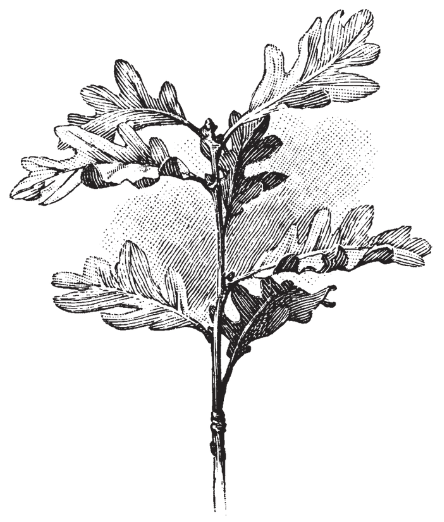LEARN
Land Inventory Template
In Sonoma County, we ask a lot and receive a lot from the land. Some common land stewardship goals are…
- Resilience to wildfire
 Habitat for wild animals
Habitat for wild animals- Drought and flood readiness
- Carbon sequestration
- Water and soil integrity
- Biodiversity
- Recreation
- Cultural uses
- Beauty
What are the goals YOU seek, and why?

Why Create a Land Inventory?
A land inventory provides a snapshot of the current state of your land, helping you understand its strengths, weaknesses, opportunities, and threats. This understanding is crucial for making informed decisions about land use and management practices. As you work through the template, remember that the goal is not just to collect data, but to gain a deeper understanding of the land.
The Land Inventory helps you understand the landscape from three perspectives:
- Abiotic Factors – the land’s physical characteristics such as topography, sunlight, temperature, wind patterns, and precipitation
- Biotic Factors – the land’s living things: plants, birds, reptiles, mammals, amphibians, and invertebrates
- Land Use History – looking at the land’s cultural heritage and the impacts of human activities over time.
To go deeper, consider working with a range of professionals to learn more. If you intend to apply for public funding, you’ll probably need a more thorough inventory (such as the LandSmart inventory).
This page can be used as a guide to create your own records, or you can use the links below to download pre-existing, editable versions of the Land Inventory Template and create your own personalized Land Inventory:
Let’s get started!
Location Information
Much of this information is available through Sonoma County’s interactive Land Use and Zoning map.
- Location Name/ID:
- Project Site Size (acres):
- Address (both physical address and mailing address, if they are different):
- Assessor Parcel Number (APN):
- Coordinates (latitude, longitude, elevation):
- Project Site Description:
- Land use and zoning designation:
Abiotic Factors
Abiotic factors are not associated with or derived from living organisms. Abiotic factors include characteristics such as topography, sunlight, temperature, wind patterns, and precipitation.
Think about dividing your overall project site into three to seven major distinct areas based on the following characteristics. Being able to describe these areas to yourself and others will help plan future work. For each area, come up with a name or number, and describe its characteristics.
Some of the information below can be found using the Wildfire Fuel Mapper.
- Topography
– Elevation:
– Slope:
– Aspect (direction the land faces):
– Features (i.e. box canyon, ridgeline, ravine):
2. Soil:
– Soil type (e.g., sandy, loamy, clayey; see map 8 of the Wildfire Fuel Mapper):
– Unusual soils (e.g. serpentinite):
– Risk of unstable soils or landslides:
3. Hydrology
– Watershed (what waterway does this area drain to):
– Water sources (rivers, streams, ponds):
– Water quality (do any water features have banks or a bed? Is the water clear?):
– Groundwater depth:
– Wetland areas (if any):
– Drainage patterns (how many days or months in the year does water run over this area? Does it flow in a “sheet” or in a line?):
4. Climate:
– Temperature (average, seasonal variations):
– Precipitation (average, seasonal patterns):
– Frost dates (first/last frost):
– Future climate expectations:
– Is this area more hot, cold, humid, windy, or dry than others adjacent to this location?:
5. Fire history
Years since most recent wildfire:
Years since most recent intentional fire:
Years since high-severity fire:
Severity of most recent fire (wildfire or intentional fire):
Biotic Factors
This section helps you inventory flora, fauna, birds, reptiles and amphibians, and invertebrates.
In addition to the specific resources recommended below, make use of iNaturalist to document and identify any species at the stewardship site.
a) Flora
Vegetation communities (Check What Grows Here on CalFlora, and the 2013 Sonoma County VegMap’s zoomable viewer)
- What are the dominant plant species (most abundant or tallest plant species) in various places on your land? Do you have trees, shrubs, grasses, or forbs (herbaceous flowering plants) in different places? Are there certain ages of woody plants that are present or absent?
- Fuel levels, or the amount of dead or dying flammable plant material. The Wildfire Fuel Mapper is currently the best off-the-shelf data source, though its data is somewhat dated.
Describe each major native or naturalized species; use Seek, iNaturalist, or CalFlora for identification:.
Species name:
Abundance (low, medium, high):
Distribution (where found):
Notes (e.g., importance, ecological role):
Describe each major non-native or invasive species; use CalIPC or Picture This for help with identification:
Species name:
Abundance (low, medium, high):
Distribution (where found):
Impact on Ecosystem:
Management Actions Required:
Describe each major species of fungi, lichen, mosses, and other non-vascular plant species; use Seek, iNaturalist, or CalFlora for help with identification:
Species name:
Abundance (low, medium, high):
Distribution (where found):
Notes (e.g., importance, ecological role):
b. Fauna
Describe major species of Mammals (see also this list) on the land. For common species, species that have an outsize impact ecologically, or rare or shy species you suspect may be present, describe characteristics such as the following:
Species:
Abundance (rare, occasional, common):
Habitat Requirements:
Notes (e.g., ecological role, conservation status):
Describe major species of Birds (review this information on Sonoma County and this bird sighting list).
For common species, species that have an outsize impact ecologically, or rare or shy species you suspect may be present, describe characteristics such as the following:
Species:
Abundance (rare, occasional, common):
Habitat Requirements:
Notes (e.g., ecological role, conservation status, migratory patterns, nesting sites):
Describe major species of Reptiles and Amphibians. For common species, species that have an outsize impact ecologically, or rare or shy species you suspect may be present, describe characteristics such as the following:
Species:
Abundance (rare, occasional, common):
Habitat Requirements:
Notes (e.g., breeding sites, conservation concerns):
Describe major species of Invertebrates; also see iNaturalist for help with identification. For common species, species that have an outsize impact ecologically, or rare or shy species you suspect may be present, describe characteristics such as the following:
Species:
Abundance (rare, occasional, common):
Ecological Importance:
Habitat Requirements:
Notes (e.g., pollinators, decomposers):
Land Use History
Understanding historical land use, including pre-colonial and colonial periods, gives you insights into the land’s cultural heritage and the impacts of human activities over time. Conducting research, consulting historical records, and engaging with local communities and indigenous groups can help gather more specific information about the land’s historical uses.
a. Pre-European uses
Describe what you know about Indigenous cultures and tribes associated with the land. Start with resources on the Tending the Land homepage and Resources page.
Describe what you know about likely Indigenous land use practices on the land, such as hunting, harvesting plants, digging, burning, coppicing, pruning, etc. Start with some of the resources on the homepage. Which areas were likely stewarded with which practices? What effects did that stewardship have?
b. Land uses since European contact
Land occupation history
- Who has inhabited this land over time?
- What were the past stewards’ priorities and land uses?
- Did any notable historical figures or events affect this site?
Land use history
For each land use or land use effect, such as agriculture, logging, mining, roads, water harvesting, erosion, introduction of invasives, describe:
Land use:
Years active:
Impact on local ecosystem and indigenous communities:
Consider these questions specific to agricultural uses:
- When did subsistence farming transition to large-scale agriculture?
- What crops or farming practices have been dominant during different time periods?
- How has agriculture affected the land (e.g. barbed wire, fertilization, fire suppression, erosion)?
Consider these questions specific to industrial or urban uses:
- When did industrial activities or urban development begin on or near the site?
- What impacts have these uses had on soil, water sources, and other natural resources?
- What historical events or industries shaped the surrounding landscape?
c. Land use changes over time
- Major shifts in land use patterns and practices over time:
- Notable events, policies, or economic factors influencing land use changes:
- Long-term impacts of land use changes on the site’s ecological and cultural characteristics:
Additional Resources:
Ecological Principles for Managing Land Use
Ecological Concepts, Principles, and Applications to Conservation
The California Naturalist Handbook is an accessible introduction to California’s geology, plants, wildlife, and ecology. It is the text for the California Naturalist course and certification, offered regularly by at least three organizations in Sonoma County.

